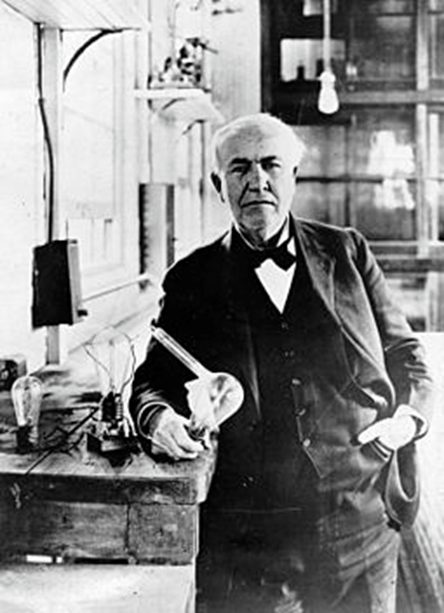培育有方 認識雙重特殊資優生 | 認識資優 | 香港資優教育學苑
對不少教師及家長而言,教導資優生已經是一個挑戰。然而,當這些資優生擁有與一般學生不同的資優特質,同時還有一些學習障礙,情況就變得更複雜。若這些學習障礙未能得到適當的支援,這些障礙有機會窒礙資優生發揮他們的天賦。

雙重特殊資優生的主要類別及特質
根據香港特別行政區政府教育局 2019 年更新的《全校參與模式融合教育運作指南》,雙重特殊資優並非是其中一種獨立的特殊教育需要的分類方式,而是指有特優智能的同時,亦有以下一種或多種特殊教育需要。若果資優生同時擁有多於一項的學習障礙,稱之為多重特殊資優生(Multiple-exceptional students)。
- 學習需要: 特殊學習困難, 如讀寫困難
- 行為、情緒及社群發展需要: 注意力、自制力或社交發展困難,如專注力不足 / 過度活躍症、自閉症
- 感知、溝通及肢體需要: 感官障礙,如視障、聽障;溝通障礙,如言語障礙; 肌能活動障礙, 如大腦麻痺
特殊學習困難 (Specific Learning Difficulties) 可包括以下一種或多種困難︰
• 學習障礙 (Learning Disorder) | • 溝通障礙 (Communication Disorder) |
• 閱讀障礙 (Reading Disorder) | • 言語表達障礙 (Expressive Language Disorder) |
• 數字障礙 (Dyscalculia) | • 語言接收與表達障礙 (Mixed Receptive-Expressive Language Disorder) |
• 書寫障礙 (Disorder of Written Expression) | • 語音障礙 (Phonological Disorder) |
• 動作技能障礙 (Motor Skill Disorder) | • 口吃 (Stuttering) |
• 動作協調障礙 (Developmental Coordination Disorder) |
|
雙重特殊資優生較難識別
要識別雙重特殊資優生並不容易,由於他們的抽象推理能力可以掩蓋了他們的弱點,所以兒童越聰穎,就越難識別其學習障礙(Silverman, 2002)。同樣地,雙重特殊資優生的過人智能或才華,亦可能被其學習障礙所遮蓋。一般的識別過程分為兩種,一種只着重培育其資優特質,另外一種只集中於處理/支援其特殊教育需要(Boodoo, Bradley, Frontera, Pitts & Wright, 1989);另外有部分雙重特殊資優生則因未被發現而沒有歸類,得不到任何一類的支援 ── 因為他們看來與普通學生無異。
3種雙重特殊資優生在學校常會遇到的情況:
情況一
教師只集中培訓他們的資優範疇,但他們的學習困難尚未識別,隨着學習內容漸趨複雜,他們的成績或會持續下滑,導致他們的學習動機下降,並開始懷疑自己的能力(Baum & Owen, 2004)。雙重特殊資優生經常成為低成就或無心向學的學生,甚至被標籤為「懶惰」(Silverman, 1993)。如果學生的學習障礙到高中時還沒有被識別,社交及情緒問題可能伴隨學習障礙滋長(Baum & Owen, 2004)。

情況二
他們只獲安排接受支援其特殊教育需要的服務,但其天賦繼續被忽視。對於學習障礙的強烈無助感將會逐漸掩蓋與特殊天賦有關的任何正面感覺,而教育體系亦不斷強化他們這種負面感覺(Baum & Owen, 2004)。
情況三
至於那些一直未有歸類的雙重特殊資優生,由於他們較高的認知能力剛好彌補了學習障礙的不足,故此學業成績可以維持在一般水平,但潛能卻未得到充分發揮,結果使他們不能被識別及轉介到資優計劃或特殊教育服務(Trail, 2011)。
智力隱藏障礙,而障礙掩蓋天賦。有時,在一些非傳統的學習環境中,例如減少文字報告,改用戲劇、辯論、專題研究及討論,雙重特殊資優生的天賦便會展現(Baum & Owen, 2004)。
具有障礙的知名人士
1) 研究有障礙的知名人士
了解具有障礙的知名人士,有助於讓雙重特殊資優生及其家人認識到,儘管面對障礙,他們也能取得成功。在選擇知名人士作為楷模時,要引導雙重特殊資優生挑選與他們有類似障礙的名人,但卻不要刻意提及他們的障礙。如果兒童能透過自己的研究發現他們的障礙則會更佳(Trail, 2011)。
 有障礙的知名人士 - Thomas Edison(聽力受損)
有障礙的知名人士 - Thomas Edison(聽力受損)
 有障礙的知名人士 - Walt Disney(學習障礙)
有障礙的知名人士 - Walt Disney(學習障礙)
2) 有障礙的知名人士
| 障礙 | 知名人士 | 卓越成就 |
| 自閉譜系 | Tim Page Temple Grandin 柯文哲 | 普立茲獎、評論家、作家 學院教授、作家 醫生﹑政治人物 |
專注力不足及過度活躍 | Michael Phelps Richard Branson | 奧運游泳冠軍 企業家 |
讀寫障礙 | Albert Einstein Henry Winkler 李光耀 | 數學家、物理學家 演員、作家 律師﹑新加坡第一任總理 |
其他 | Stevie Wonder(視力受損) Thomas Edison(聽力受損) Walt Disney(學習障礙) | 歌手、作曲家 發明家 製作人、企業家 |
---------------------------------------
參考文獻
- Baum, S., Olenchak, F. R., & Owen, S. V. (1998). Gifted students with attention deficits: Fact and/or fiction? Or, can we see the forest for the trees? Gifted Child Quarterly, 42(2), 96-104.
- Baum, S., & Olenchak, F. R. (2002). The alphabet children: GT, ADHD and more. Exceptionality, 10(2),77-91.
- Baum, S., & Owen, S. V. (1988). High ability/learning disabled students: How are they different? GiftedChild Quarterly, 32, 321-326.
- Baum, S. M. & Owen, S. V. (2004). To be gifted & learning disabled: Strategies for helping brightstudents with learning & attention difficulties. Mansfield, CT: Creative Learning Press.
- Bender, W. N. (2008). Differentiating instructions for students with learning disabilities: Best teachingpractices for general and special educators (2nd Ed.). Thousand Oaks, CA: Corwin Press.
- Bianco, M. (2005). The effects of disability labels on special education and general education teachers'referrals for gifted programs. Learning Disabilities Quarterly, 28, 285-294.
- Boodoo, G. M., Bradley, C. L., Frontera, R. L., Pitts, J. R., & Wright, L. P. (1989). A survey of proceduresused for identifying gifted learning disabled children. Gifted Child Quarterly, 33(3), 110-114.
- Brody, L. E., & Mills, C. J. (1997). Gifted children with learning disabilities: A review of the issues. Journalof Learning Disabilities, 30, 282-297.
- Coleman, M. R. (2005). Academic strategies that work or gifted students with learning disabilities.Teaching Exceptional Children, 38(1), 28-32.
- Cooper-Kahn, J. (2011). Developing executive skills in gifted children. Nurturing the Gifted, 5, 6-9.
- Cooper-Kahn, J., & Dietzel, L. (2008). Late, lost, and unprepared: A parents'guide to helping childrenwith executive functioning. Bethesda, MD: Woodbine House.
- Dawson, P., & Guare, R. (2004). Executive skills in children and adolescents. A practical guide toassessment and intervention. New York, NY: Guilford Press.
- Dawson, P., & Guare, R. (2009). Smart but scattered. New York, NY: Guilford Press.
- Gillberg, I. C., & Gillberg, C. (1989). Asperger syndrome - Some epidemiological considerations: Aresearch note. Journal of Child Psychology and Psychiatry, 30, 631-638.
- Graner, P. S., Faggella-Luby, M. N., & Fritschmann, N. S. (2005). An overview of responsiveness to intervention: What practitioners ought to know. Topics in Language Disorders, 25(2), 93-105.27 -
- Gioia, G. A., Isquith, P. K., Guy, S. C., & Kenworthy, L. (2000). Behavior Rating Inventory of ExecutiveFunction. Odessa, FL: Psychological Assessment Resources.
- Hartmann, T. (1996). Beyond ADD: Hunting for reasons in the past and present. Green Valley, CA:Underwood Books.
- Henderson, A., Johnson, V., Mapp, K., & Davies, D. (2006). Beyond the bake sale: The essential guide tofamily/school partnerships. New York, NY: The New Press.
- Hishinuma, E., & Tadaki, S. (1996). Addressing diversity of the gifted/at risk: Characteristics foridentification. Gifted Child Today, 19(5), 20-25, 28-29, 45, 50.
- Lovecky, D. V. (1999, October). Gifted children with AD/HD. Paper presented at the 11th Annual CHADD International Conference, Washington, DC.
- Lovecky, D. V. (2004). Different Minds: Gifted Children With AD/HD, Asperger Syndrome, and OtherLearning Deficits. London: Jessica Kingsley.
- MacMillan, D. L., & Siperstein, G. N. (2002). Learning disabilities as operationally defined by schools. In R. Bradley, L. Danielson, & D. P. Hallahan (Eds.), Identification of learning disabilities: Research to practice (pp. 287-333). Mahwah, NJ: Lawrence Erlbaum Associates, Inc.
- McCoach, D. B., Kehle, T. J., Bray, M. A., & Siegle, D. (2001). Best practices in the identification of gifted students with learning disabilities. Psychology in the Schools, 38, 403-411.
- McCoach, D. B., Kehle, T. J., Bray, M. A., & Siegle, D. (2004). The identification of gifted students with learning disabilities: Challenging, controversies, and promising practices. In T. M. Newman & R. J. Sternberg (Eds.), Students with both gifts and learning disabilities (pp. 31-48). New York, NY:Kluwer.
- Nielsen, M. E. (2002). Gifted students with learning disabilities: Recommendations for identification andprogramming. Exceptionality, 10, 93-111.
- Neihart, M. (2000). Gifted children with Asperger's Syndrome. Gifted Child Quarterly, 44, 222-230.
- Sternberg, R. J., & Zhang, L. F., (2001). Perspectives on thinking, learning, and cognitive styles. Mahwah,NJ: Lawrence Erlbaum.
- Sternberg, R. J., Grigorenko, E. L., & Zhang, L. F. (2008). Styles of learning and thinking matter ininstruction and assessment. Perspectives on Psychological Science, 3, 486-506.
- Silverman, L. K. (1993). Counseling the gifted and talented. Denver, CO: Love.
- Silverman, L. K. (2002). Upside-Down brilliance. The visual-spatial learners. Denver, CO: DeLeon Publishing.
- Tomlinson, C. A. (1999). The differentiated classroom: Responding to the needs of all learners.Alexandria, VA: Association for Supervision and Curriculum Development.
- Trail, B. A. (2011). Twice-exceptional gifted children: Understanding, teaching and counseling gifted students. Waco, TX: Prufrock Press.28 -
- Webb, J. T., Amend, E. R., Webb, N. E., Goerss, J., Beljan, P., & Olenchak, R. (2005). Misdiagnosis and dual diagnoses of gifted children and adults: ADHD bipolar, OCD, Asperger's, depression andother disorders. Scottsdale, AZ: Great Potential Press.
- Vygotsky, L. (1978). Interaction between learning and development. In T. M. Cole (Ed.), Mind in society(pp. 79 – 91). Cambridge, MA: Harvard University Press.






